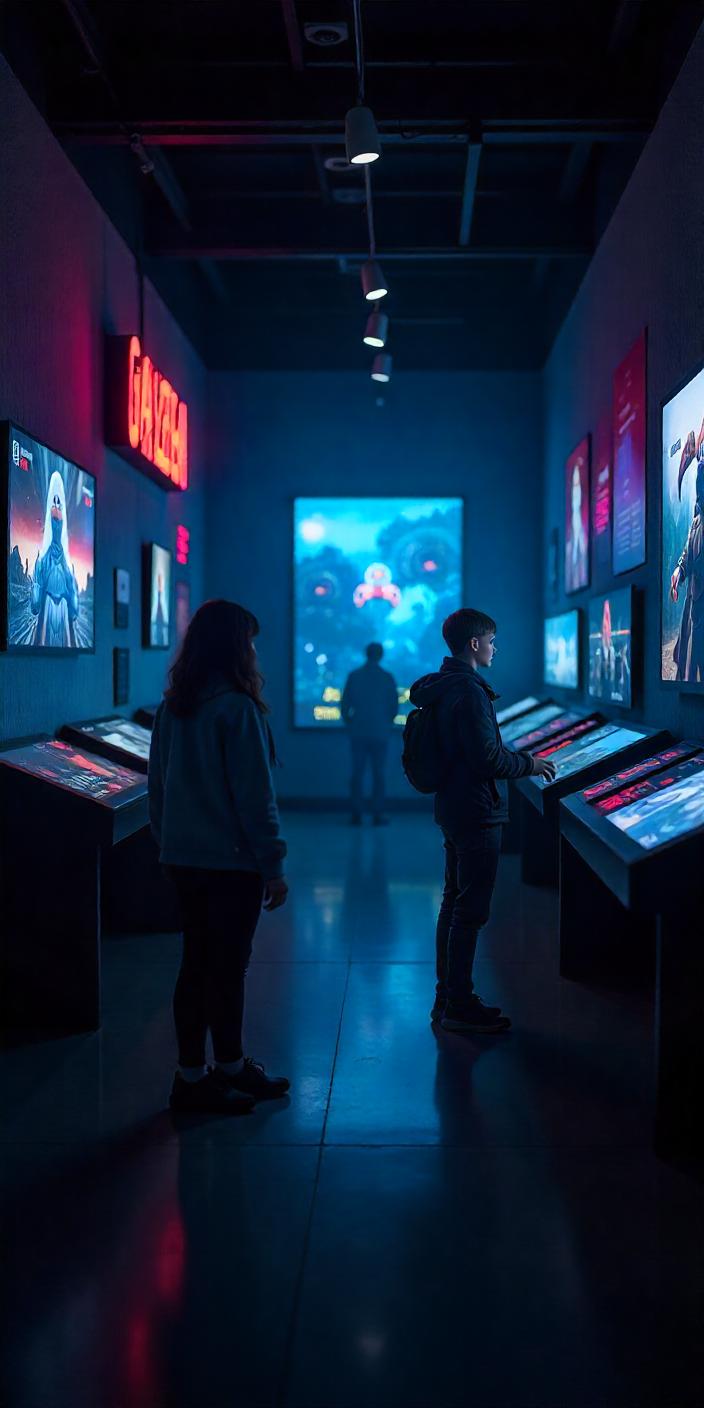From Pixels to Photorealism: The Evolution of Video Game Graphics
The history of video games is as much a story of technical innovation as it is of cultural transformation. Among the most visually striking elements of this evolution has been the transformation of graphics — from simple pixelated forms in the early days to the near-photorealistic visuals of today. This journey, spanning over four decades, reflects a blend of artistic ambition, hardware progress, and the ever-rising expectations of gamers. Let’s delve into the evolution of video game graphics — from blocky sprites to cinematic realism.
The Dawn of Pixels (1970s – early 1980s)
In the beginning, video games were limited by the extremely modest hardware capabilities of early consoles and arcade machines. Games like Pong (1972) and Space Invaders (1978) used minimalist designs out of necessity. Pong, for instance, was essentially two white paddles and a dot against a black screen. Despite the simplicity, these visuals sparked the imagination of players.
This era was dominated by 2D sprites, where every object was made up of square “pixels” — each a single color. Characters and backgrounds were rendered with rudimentary pixel art, which relied on creative use of limited resolution and color palettes. Yet these early visuals had charm, offering just enough detail for players to fill in the rest with their imagination.
8-Bit and 16-Bit Glory (1980s – early 1990s)
The 1980s and early 1990s saw a significant leap with the introduction of 8-bit and later 16-bit systems, such as the Nintendo Entertainment System (NES) and the Super Nintendo Entertainment System (SNES). With improved resolution and a broader color palette, game developers could create more intricate and colorful environments.
Characters like Mario, Link, and Mega Man became iconic during this era, with visuals that were instantly recognizable. Developers began to incorporate animation, parallax scrolling, and more detailed backgrounds. Games like The Legend of Zelda: A Link to the Past and Sonic the Hedgehog showcased what could be achieved with artistic talent and better tools, even with the limitations of 2D graphics.
The Polygon Revolution (Mid 1990s)
The mid-1990s ushered in the polygon era, marking the transition from 2D to 3D graphics. With the advent of consoles like the Sony PlayStation and Nintendo 64, developers began to experiment with rendering 3D models using polygons — geometric shapes used to create more complex forms.
One of the landmark titles of this era was Super Mario 64 (1996), which introduced players to a fully 3D world with dynamic camera movement and more fluid animation. Similarly, Tomb Raider brought to life a 3D Lara Croft, navigating detailed environments that felt revolutionary at the time.
Despite their now-outdated appearance, these early 3D games laid the foundation for future advancements. Textures were basic, models were blocky, and frame rates were limited, but the possibilities seemed endless.
Realism Emerges (Early 2000s)
By the early 2000s, with the arrival of consoles like the PlayStation 2, Xbox, and GameCube, 3D graphics began inching closer to realism. Developers now had access to greater memory and graphical processing power, enabling more detailed textures, lighting effects, and smoother character animations.
Games such as Metal Gear Solid 2, Halo: Combat Evolved, and Final Fantasy X showcased intricate character designs and cinematic storytelling. Developers began integrating motion capture technology to create more lifelike animations. Shadows, reflections, and environmental effects became more advanced, immersing players in worlds that felt more believable than ever before.
This era also saw the rise of cutscenes that rivaled animated films, often indistinguishable from pre-rendered CGI thanks to in-game engines becoming more powerful.
High Definition and the Rise of Realism (Late 2000s – 2010s)
The jump to HD graphics with consoles like the PlayStation 3, Xbox 360, and later PlayStation 4 and Xbox One, marked a massive leap in graphical fidelity. Textures became more detailed, models more complex, and lighting effects — including global illumination and dynamic shadows — brought game environments to life in unprecedented ways.
Games like Uncharted 4, The Witcher 3, and Red Dead Redemption 2 were praised not just for their gameplay and narratives, but for their visual beauty. Characters began to exhibit nuanced facial expressions and emotions. Environments reacted to the player’s actions — footprints in snow, wind in the grass, and weather systems that changed dynamically.
PC gaming also flourished in this era, with high-end GPUs enabling even greater fidelity. Technologies like anti-aliasing, ambient occlusion, and tessellation refined the edges, depth, and texture of digital worlds.
Enter Ray Tracing and Photorealism (2020s and Beyond)
The latest generation of gaming, represented by consoles like the PlayStation 5, Xbox Series X, and high-performance PCs, is characterized by a move toward photorealism. This is driven in large part by ray tracing — a rendering technique that simulates the physical behavior of light to create stunningly realistic reflections, shadows, and global illumination.
Games such as Cyberpunk 2077, Forza Horizon 5, and Microsoft Flight Simulator now blur the line between virtual and real. Facial scans, ultra-high-resolution textures, and AI-assisted animation make digital characters look and move like real people. Environments are crafted with obsessive detail — from the grain of wood in furniture to the play of light across skin.
The rise of photogrammetry — the use of real-world photography to generate game assets — has also contributed significantly to realism. Combined with procedural generation and machine learning, game worlds are now vast, detailed, and incredibly lifelike.
The Role of Game Engines
Underlying all this progress is the advancement of game engines like Unreal Engine, Unity, CryEngine, and Frostbite. These engines provide developers with powerful tools to create sophisticated visuals efficiently. Unreal Engine 5, for example, includes technologies like Lumen (for global illumination) and Nanite (for virtualized geometry), pushing the boundaries of what’s visually possible in real time.
Game engines have also democratized development, allowing indie developers to create graphically impressive games on smaller budgets, contributing to a diverse and vibrant gaming landscape.
Beyond Realism: Artistic Styles and Aesthetic Choices
While the pursuit of realism dominates mainstream AAA titles, many developers intentionally choose stylized graphics that prioritize artistic expression over fidelity. Games like The Legend of Zelda: Breath of the Wild, Hades, and Cuphead show that compelling visuals don’t always require photorealism.
Stylized graphics often age better and allow for unique storytelling methods, offering players experiences that are visually distinct and emotionally resonant.
Challenges and the Future of Game Graphics
Despite the astonishing progress, challenges remain. High-end graphics require powerful (and expensive) hardware, raising issues of accessibility and equity among players. Larger textures and more detailed models also result in ballooning file sizes and development costs.
Looking forward, technologies such as AI-driven upscaling (e.g., NVIDIA DLSS), real-time path tracing, and cloud rendering promise to make high-fidelity graphics more efficient and accessible. Virtual reality (VR) and augmented reality (AR) also offer new frontiers where visual realism can enhance immersion in fundamentally different ways.
As machine learning continues to evolve, we may even see procedural or AI-generated graphics that adapt in real time to player behavior, preferences, or emotional states.
Conclusion
The journey from pixels to photorealism is a testament to the creativity and innovation of the gaming industry. What began as dots on a screen has evolved into rich, immersive worlds that rival Hollywood in visual storytelling. Yet, even as we approach graphical realism, the heart of gaming remains unchanged — it’s about experience, emotion, and interaction.
The future of video game graphics is not just about achieving perfect realism, but about using technology to better tell stories, evoke feelings, and create memorable adventures. Whether it’s through a pixelated hero or a hyper-realistic warrior, the power of video game visuals lies in their ability to transport us to new worlds — and that journey is far from over.




